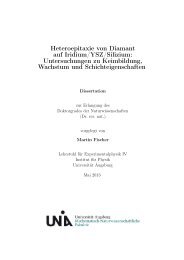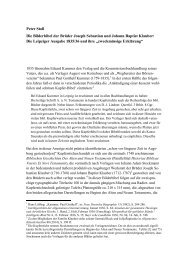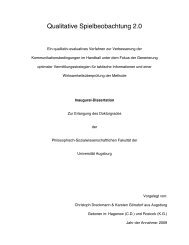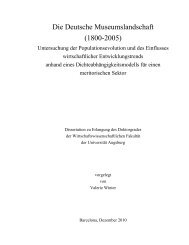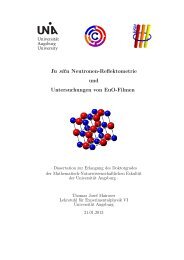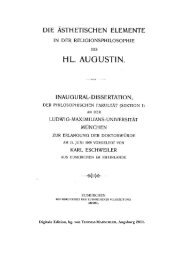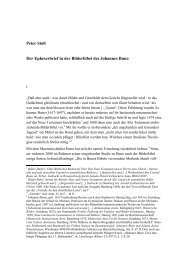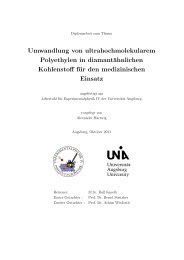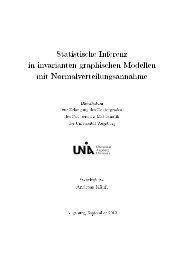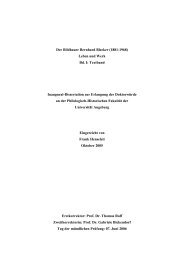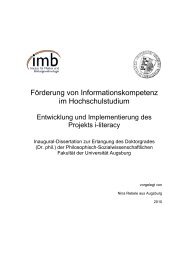An Ontology for Digital Forensics in IT Security Incidents - OPUS
An Ontology for Digital Forensics in IT Security Incidents - OPUS
An Ontology for Digital Forensics in IT Security Incidents - OPUS
You also want an ePaper? Increase the reach of your titles
YUMPU automatically turns print PDFs into web optimized ePapers that Google loves.
58 CHAPTER 7. IMPLEMENTATION<br />
the complete registry tree is retrieved. The problem about this approach is<br />
that the pr<strong>in</strong>tkey function calls take longer time with the depth of the key<br />
<strong>in</strong> the tree. In tests it started with around 30 seconds and went up to over<br />
one m<strong>in</strong>ute per call. The registry of the test systems conta<strong>in</strong>s between 45000<br />
and 50000 keys. It would take approximately 47500 ∗ 45 seconds = 2137500<br />
seconds ≈ 24, 7 days to extract all keys this way. It did not make it much<br />
better to parallelize the task as it would take 24, 7 days / 8 ≈ 3 days <strong>for</strong> eight<br />
parallel function calls. The function hivedump pr<strong>in</strong>ts all keys <strong>for</strong> a specied<br />
hive and does this faster than 24, 7 days. But it only pr<strong>in</strong>ts the last write<br />
date and the key and not the sub keys and values.<br />
The solution is to comb<strong>in</strong>e the code of both functions to create hivedump2<br />
which lists all keys like the hivedump function but pr<strong>in</strong>ts the detailed<br />
<strong>in</strong><strong>for</strong>mation of the pr<strong>in</strong>tkey function. The new function is executed parallel<br />
<strong>for</strong> all hives the consequence of which is a duration of around two hours <strong>for</strong><br />
the extraction of the registry.<br />
7.5 Database<br />
At rst Neo4J [Neo Technology, Inc, 2013] was used <strong>for</strong> stor<strong>in</strong>g the RDF<br />
and RDFS tuples. The database has the advantage of a graphical web front<br />
end which visualizes the nodes and their connections. When later <strong>in</strong> the<br />
implementation the registry data was added this front end was very slow.<br />
This is no big problem as the database only has to answer queries. But the<br />
database was also very slow or did not respond at all.<br />
After this problem Neo4J was replaced by the Sesame framework[Aduna,<br />
2012]. The database of Sesame is much faster and allows SPARQL queries<br />
from the web front end what makes develop<strong>in</strong>g new queries easier. The query<br />
that did not respond <strong>in</strong> Neo4J returned a result after 100ms. In the current<br />
version of the Java program the user can select which database should be<br />
used.<br />
7.6 SPARQL<br />
The creation of queries to retrieve <strong>in</strong><strong>for</strong>mation from the database is exempli-<br />
ed with a query that nds a specic le name, a query that lists all values<br />
of the autorun keys <strong>in</strong> the registry and a query that nds processes that have<br />
no parent or only themselves. At all listed queries the prex shown <strong>in</strong> list<strong>in</strong>g<br />
7.2 is omitted to make them easier to view and to save space.<br />
7.6.1 F<strong>in</strong>d File<br />
A rst try is to use the query from list<strong>in</strong>g 7.3. The result should be the<br />
File Name entry of the specied le. In l<strong>in</strong>e one the variable ?file is spec-




